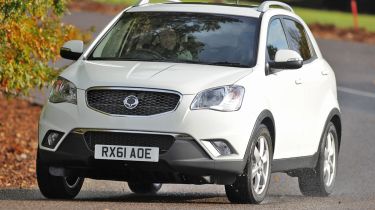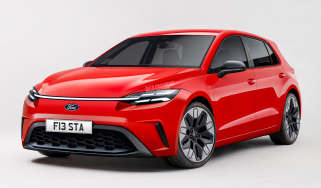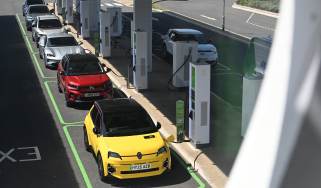SsangYong Korando
All-new 4x4 is aiming for the top on brand’s return to the UK car market
Is the Korando going to succeed where its predecessors have failed, by registering a maiden road test victory for SsangYong? It has the right credentials to make a fist of it. Firstly, its exterior has been styled by Italdesign-Giugiaro. As a result, the car looks really modern, and its underpinnings back up this first impression.
All the firm’s previous SUVs relied on dated technology, with a separate body bolted on to a ladder-frame chassis, but the new Korando uses a one-piece monocoque. That brings it into line with rivals, but there’s no escaping its budget roots inside. Sit behind the wheel and there’s plenty of evidence of its lower price tag everywhere.
The cabin features some pretty unappealing plastics that are hard and cold to the touch. The switchgear feels cheap, especially the circular controls for the heating and ventilation, and the simple design does little to improve matters.
You get lots of kit, so the options list is short, but even here, the SsangYong isn’t perfect. For example, the optional £999 sat-nav system is a fiddly and dated aftermarket unit that is confusing to operate.
What you do get from the Korando is space and practicality. Rear passengers have as much room in this car as they do in the Hyundai, and both provide plenty of cabin stowage. Neat touches include rear seatbases that drop automatically when you fold the split rear backrests, creating a flat load area, and a handy space for storing the roller blind-style load cover in the boot.
The Korando can also hold its own when it comes to load volume. With the seats in place, it trumps the ix35 by 21 litres with a 486-litre capacity, but fold them and it trails by 124 litres, with a 1,312-litre maximum space.
Practical matters are crucial in this sector, and the Korando has another very strong selling point: its class-leading towing weight of 2,000kg for braked trailers and caravans. The ix35 can only pull a 1,600kg load, so there’s a clear winner for anyone who’s planning to fit a towbar.
But if driving enjoyment and comfort are your priorities, the Korando should definitely take a back seat. It’s powered by SsangYong’s 2.0-litre diesel, which produces 173bhp and 360Nm of torque. There’s little wrong with the figures, but it loses out to the Hyundai on both counts and is noisier, too.
Against the clock, it trailed the ix35 by a full second in the sprint from 0-60mph (with a time of 9.5 seconds) and failed to overturn that disadvantage in our other acceleration tests.
In reality, the Korando doesn’t feel much slower to drive, but its more vocal engine and sluggish transmission take the edge off the experience. The auto gearbox takes too long to kick down when you prod the throttle sharply.
The Korando also trails dynamically – its steering weights up heavily when cornering and you feel kickback through the rim as the front wheels hit any imperfections in the road.
The suspension is also flawed, as the Korando never settles down on typical British B-roads, fidgeting relentlessly over bumps and crests. And when you arrive at a corner, there’s much less composure and grip on offer than there is in the ix35. The SsangYong was also beaten in our braking tests, making it a dynamic clean sweep for the Hyundai.
The newcomer got the better of its rival at the pumps, though. In normal driving, 100 per cent of the power is sent to the front wheels to boost economy.
During its time on test, the Korando registered 23.4mpg. Both cars’ returns were skewed by our performance tests, but the ix35 posted 22.3mpg, so there’s little difference when it comes to efficiency.
CO2 outputs are similar, too, so the cars will be closely matched on running costs, and the SsangYong has the same five-year, unlimited-mileage warranty as the Hyundai.
Despite the car’s weaknesses, the biggest obstacle buyers will have to overcome is its image. Dismal resale value predictions mean you stand to lose a fortune in depreciation compared to the ix35. The Korando is simply not cheap enough to make sense.
Details
Chart position: 2
WHY: We find out if the most advanced SsangYong ever made is good enough to rival one of the most convincing compact SUVs around.



